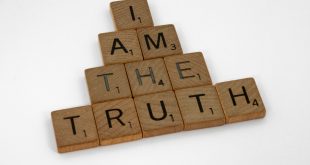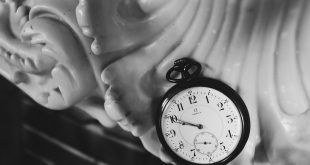Love has been the subject of poetry, novels, and movies for centuries, yet science tells us there are clear biological and psychological reasons why we are drawn to certain people. Attraction is not just about appearance — it’s shaped by hormones, emotions, cultural influences, and even subconscious preferences. At Bloggers Trend, we dive into the fascinating world of human attraction and explore the question: Why do we fall in love?
The Biological Foundation of Attraction
1. The Role of Hormones
Love is often described as a “chemical reaction,” and there’s truth to that. When we feel attracted to someone, our brains release:
-
Dopamine: Associated with pleasure, reward, and excitement.
-
Oxytocin: The “bonding hormone” that strengthens trust and intimacy.
-
Serotonin: Helps regulate mood and contributes to feelings of stability.
These chemicals create the rush of happiness, butterflies in the stomach, and the sense of euphoria we often associate with falling in love.
2. Evolutionary Psychology
From an evolutionary perspective, attraction is linked to survival and reproduction. Humans are wired to notice traits that signal good health, fertility, and strong genetics. For instance:
-
Symmetry in facial features often signals genetic fitness.
-
Physical vitality suggests strength and longevity.
-
Subconscious cues like scent can influence attraction through pheromones.
Psychological Factors Behind Attraction
1. The Similarity Effect
Studies show that we are more likely to be attracted to people who share our interests, values, and backgrounds. Similarity fosters understanding and reduces conflict, making relationships easier to maintain.
2. The Proximity Effect
Familiarity breeds liking. People are often attracted to those they interact with regularly, such as classmates, colleagues, or neighbors. Simply being near someone increases the chances of emotional connection.
3. Reciprocity
We are drawn to people who show interest in us. Knowing that someone likes us back boosts self-esteem and increases attraction, creating a positive feedback loop.
4. The Halo Effect
When we find one quality attractive (like physical appearance), we often assume the person has other positive traits too — kind, smart, or talented. This psychological shortcut influences first impressions heavily.
Cultural and Social Influences
Attraction isn’t purely biological or psychological — culture also plays a powerful role.
-
Beauty Standards: Different cultures idealize different traits, from body shapes to skin tones. What’s attractive in one society may be less valued in another.
-
Social Expectations: Media, traditions, and family expectations influence partner choices.
-
Status & Success: In many cultures, social standing and financial stability contribute to attractiveness, as they signal security.
For example, in some societies, education or profession may weigh as heavily in attraction as physical appearance.
Technology and Modern Love
The rise of dating apps has transformed how people experience attraction. Algorithms match users based on shared preferences, while swipes and likes mimic the instant validation system of social media.
However, while technology can initiate attraction, chemistry in real-life interaction still determines long-term success. The tone of voice, body language, and presence are elements apps can’t replicate.
The Mystery Factor: Why Some Sparks Can’t Be Explained
Despite all the science, attraction sometimes defies logic. You might meet someone who doesn’t match your “type” yet feel an undeniable connection. Psychologists suggest this may be due to subconscious associations — someone may remind us of comforting experiences, childhood memories, or even personalities we admire.
This unexplainable spark is part of what makes love both a science and an art.
Long-Term Attraction vs. Initial Spark
Attraction that leads to lasting love often shifts from passion to deeper emotional connection. Psychologists divide love into three stages:
-
Lust: Driven by physical desire and hormones.
-
Attraction: Characterized by excitement, obsession, and emotional highs.
-
Attachment: A deeper bond based on trust, respect, and companionship.
Sustainable relationships rely less on adrenaline rushes and more on commitment, shared goals, and emotional intimacy.
Can We Control Attraction?
The short answer: partially. While we can’t control initial chemistry, we can nurture attraction by:
-
Spending quality time together (proximity strengthens bonds).
-
Communicating openly to build trust.
-
Showing genuine interest and appreciation.
-
Aligning values and long-term goals.
Attraction may spark the flame, but choices and effort keep it alive.
Conclusion
Attraction is a complex blend of biology, psychology, and culture. Hormones fuel the initial rush, psychological factors shape preferences, and cultural influences refine what we see as desirable. Yet, some aspects of love remain beautifully mysterious, reminding us that it’s not just a science but also an emotional experience.
At Bloggers Trend, we believe that understanding the science of attraction can help people make wiser choices in love — while still cherishing the magic that science cannot fully explain.
FAQs
Q1: Is attraction the same as love?
No. Attraction may start love, but love develops through deeper emotional connection, commitment, and trust.
Q2: Can opposites really attract?
Yes, but research shows that long-term relationships often succeed when core values align, even if personalities differ.
Q3: Does physical appearance matter the most in attraction?
It plays a role initially, but emotional connection, compatibility, and shared values are more important for lasting relationships.
Q4: Why do we sometimes fall in love with people who are bad for us?
Unresolved psychological patterns, familiarity, or emotional dependency can draw people toward unhealthy partners.
Q5: Can science predict who we’ll fall in love with?
Science can explain patterns and tendencies, but the unique spark of love still holds mystery.
 Bloggers Trend Keeping You Up To Date
Bloggers Trend Keeping You Up To Date





